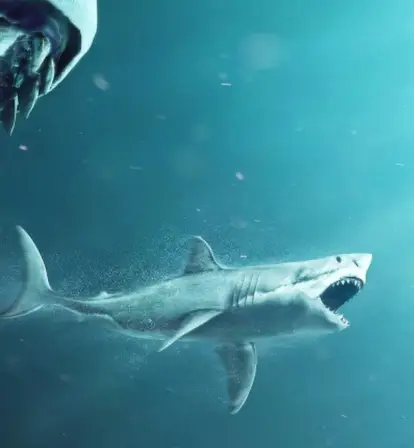The prehistoric megalodon was the largest shark species ever, reaching almost 60 feet long — but it went extinct 3.6 million years ago.
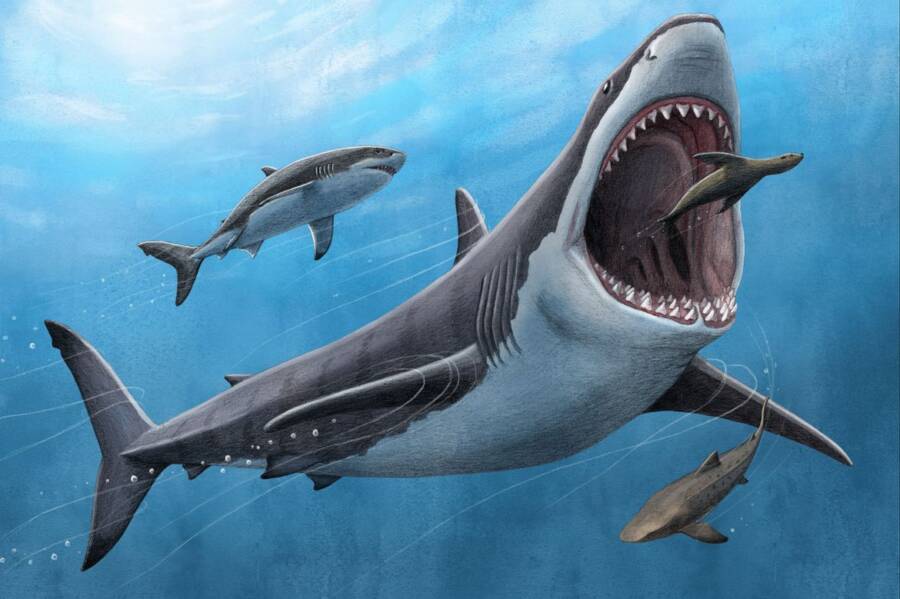
Alex Boersma/PNASKnown for its gigantic size, Megalodon was the most fearsome predator in the oceans of prehistoric Earth.
In the Earth’s oceans, there once lurked a prehistoric creature so massive and deadly that the thought of it continues to inspire fear to this very day. We now know it as the megalodon, history’s biggest shark that measured about 60 feet long and weighed approximately 50 tons.
Aside from its frightening size, the megalodon also boasted seven-inch teeth and a bite strong enough to crush a car. In addition, it could swim up to 16.5 feet per second — about twice the speed of a great white shark — making it the undeniable apex predator of the ancient oceans for millions of years.
Despite this, the megalodon went extinct around 3.6 million years ago — and we still don’t know why. How could one of the world’s largest creatures just vanish? Especially one that didn’t have any predators of its own?
There are countless theories, but nobody has been able to fully explain why one of the ocean’s deadliest beasts disappeared. But once you learn more about the megalodon, you’ll probably be glad that this shark is gone.
Megalodon: The Biggest Shark That Ever Lived
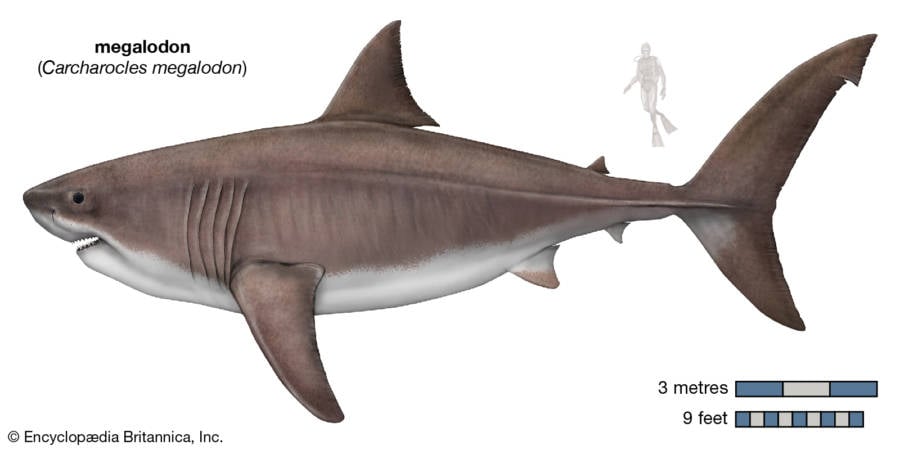
Encyclopaedia Britannica, Inc./Patrick O’Neill RileyThe size of a megalodon, compared to that of a human.
The megalodon, or the Carcharocles megalodon, is the largest shark ever documented, though estimates as to exactly how massive the animal was vary based on the source. Many experts believe that the shark grew up to 60 feet long, about the size of a standard bowling alley lane.
But other sources say it could have been even larger in size and posit that the megalodon could have reached more than 80 feet long.
In either case, they made the sharks in our oceans today look small.
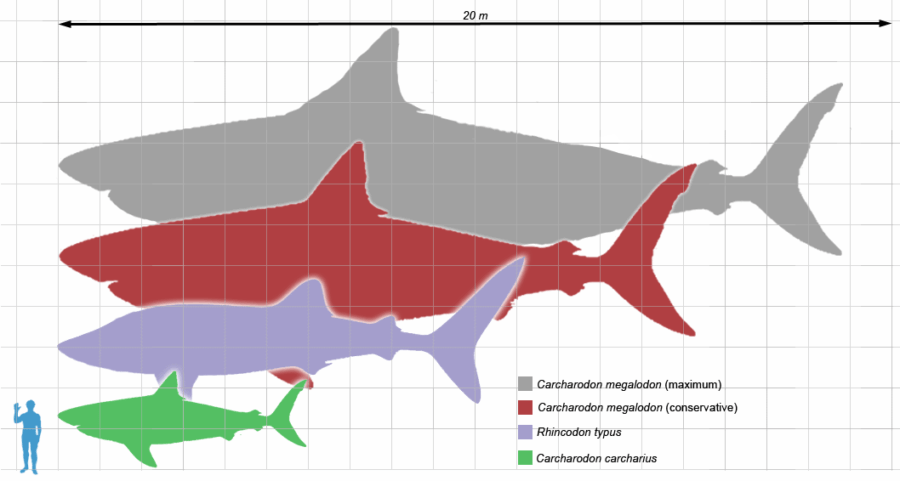
Matt Martyniuk/Wikimedia CommonsSize comparison of modern sharks to the maximum and conservative size estimates of the megalodon.
Peter Klimley, a shark expert and professor at the University of California at Davis, said if a modern great white swam next to a megalodon, it would only match the length of the megalodon’s penis.
Unsurprisingly, the megalodon’s enormous size meant that it was very heavy. Adults could weigh up to 50 tons.
And yet, the megalodon’s massive size didn’t slow it down. In fact, it could easily swim faster than a modern great white shark, or any shark species found in the Earth’s oceans today. This made the megalodon the most formidable aquatic predator the world has ever seen — and its powerful bite made it even more frightening.
The Megalodon’s Formidable Bite
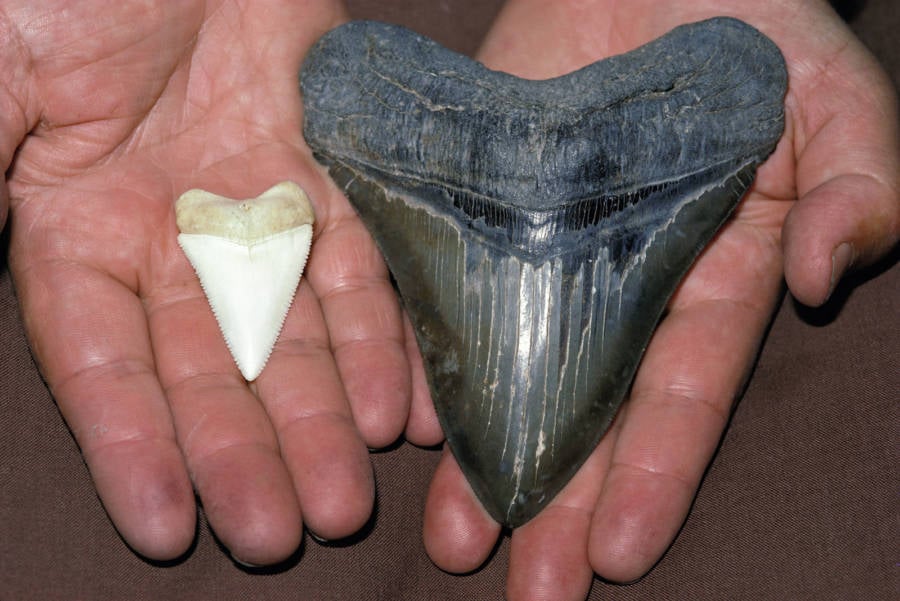
Jeff Rotman/AlamyThe megalodon tooth (right) is significantly larger than the tooth of a modern great white shark (left).
The megalodon’s fossilized teeth are the best tools that researchers have to learn new information about this long-lost beast — and they are ghastly reminders of the pain that this underwater behemoth could inflict.
Tellingly, the word “megalodon” quite literally means “big tooth” in ancient Greek, which goes to show just how prominent this creature’s teeth were. The largest megalodon tooth ever recovered measured over seven inches, though most tooth fossils are about three to five inches in length. All of these are larger than even the biggest great white shark’s teeth.
Like the great white shark, the megalodon’s teeth were triangular, symmetrical, and serrated, allowing it to easily tear through the flesh of its prey. Keep in mind, too, that sharks have multiple sets of teeth — and they lose and regrow teeth just like a snake sheds its skin. According to researchers, sharks lose a set of teeth every one to two weeks and produce somewhere between 20,000 and 40,000 teeth in a lifetime.
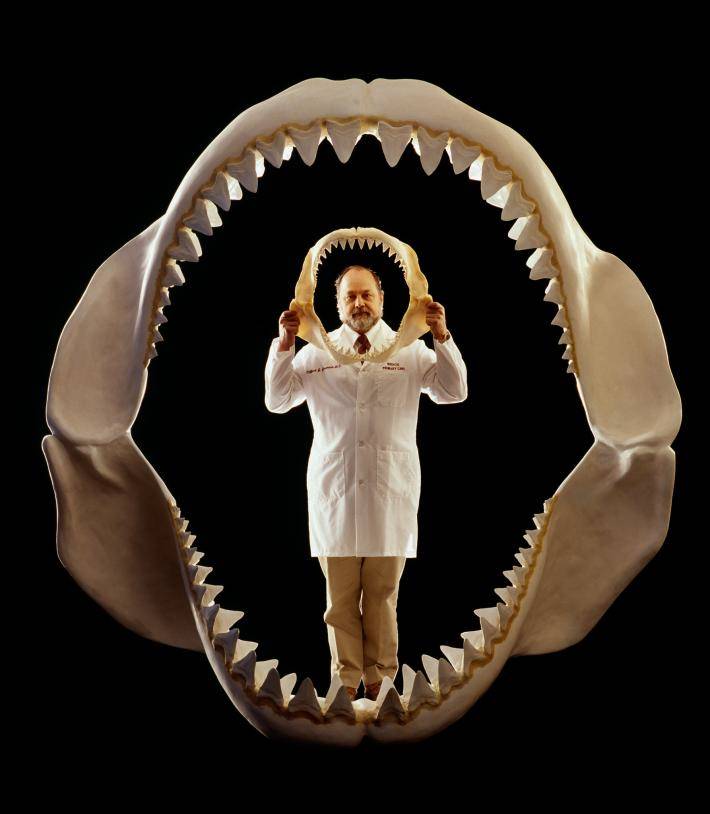
Louie Psihoyos, CorbisDr. Jeremiah Clifford, who specializes in fossil reconstruction, holds the jaws of a large great white shark while standing in the reconstructed jaws of a megalodon shark.
The megalodon’s huge teeth sat nestled inside an even more enormous jaw. Its jaw size measured up to nine feet tall by 11 feet wide — large enough to swallow two human adults standing side-by-side in a single gulp.
To compare, the average human’s bite force is around 1,317 Newtons. The megalodon’s bite force clocked in somewhere between 108,514 and 182,201 Newtons, which was more than enough force to crush an automobile.
And while cars were not around during the megalodon’s reign, its bite was more than sufficient for devouring large marine creatures, including whales.
How This Prehistoric Shark Preyed On Whales
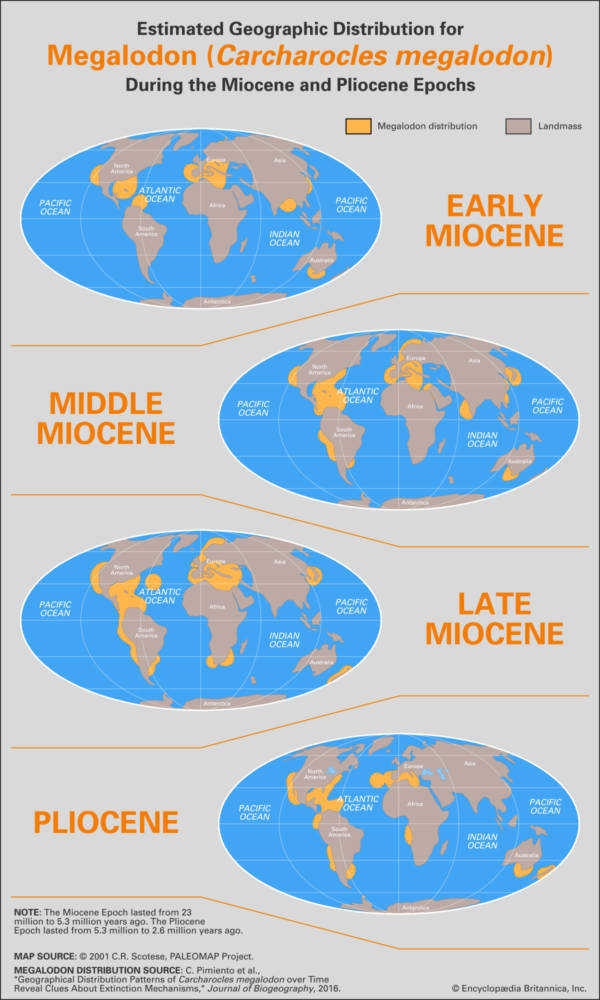
Encyclopaedia BritannicaPatterns of estimated megalodon distribution during the Miocene and Pliocene epochs.
Many scientists believe that the megalodons’ domain stretched across nearly every corner of the prehistoric oceans, as their fossilized teeth have been unearthed on every continent except Antarctica.
The megalodon preferred warmer waters and tended to stick to shallower and temperate seas, which, fortunately for it, could be found in many places around the world. But because the megalodon was such an enormous animal, the shark had to eat a massive amount of food per day.
They preyed on large marine mammals such as whales, snacking on baleen whales or even humpbacks. But when its larger meals were scarce, the megalodon would settle for smaller animals like dolphins and seals.
Death, when a megalodon attacked, did not always come quickly. Some researchers say that the megalodon strategically hunted whales by first eating their flippers or tails to make it harder for the animal to escape.
In its heyday, the megalodon was at the absolute top of the food chain. Scientists believe that mature, adult megalodons had no predators.
The only time they were vulnerable was when they were first born and still only about seven feet long. From time to time, large, bold sharks like hammerheads would brave an attack on a juvenile megalodon, as though attempting to cut it out of the ocean before it got too large to stop.
The Megalodon’s Mysterious Extinction
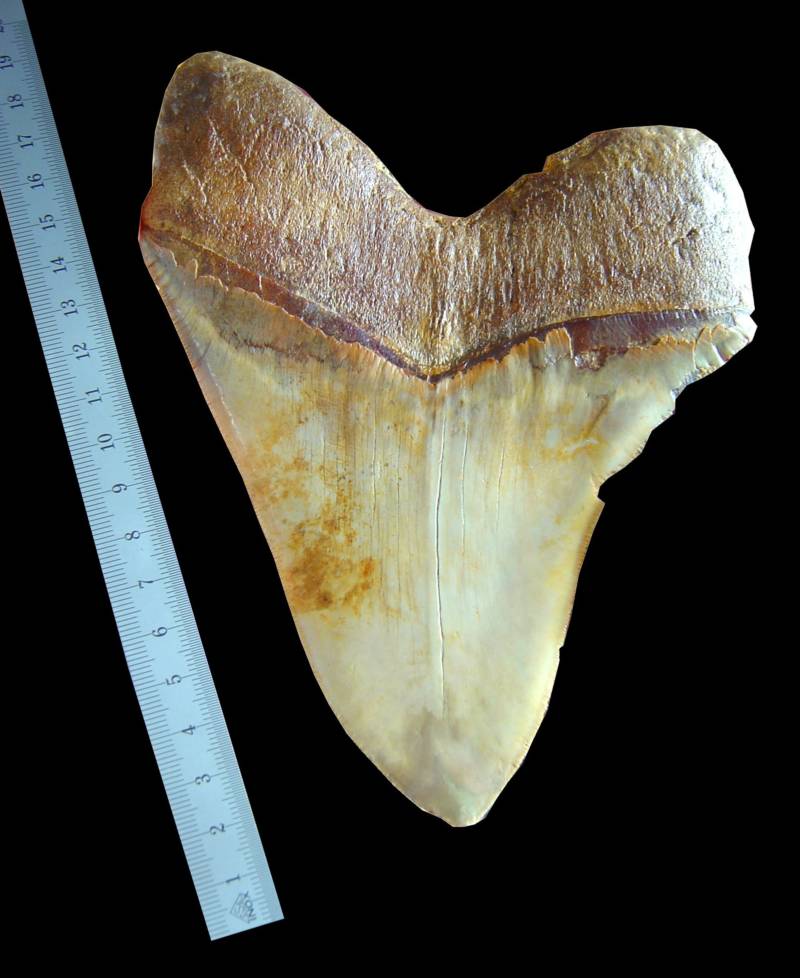
Wikimedia CommonsA megalodon tooth next to a ruler for size comparison.
It’s hard to imagine how a killer creature as massive and powerful as the megalodon could ever have gone extinct. But according to London’s Natural History Museum, the last megalodons died about 3.6 million years ago.
Nobody knows for sure how it happened — but there are theories.
One theory points to cooling water temperatures as a cause for the megalodon’s demise. After all, the Earth entered a period of global cooling around the time period that the shark began dying out.
Some researchers believe that the megalodon — which preferred warmer seas — was unable to adapt to the cooling oceans. Its prey, however, could, and moved into the cooler waters where the megalodon could not follow.
In addition, the cooler waters also killed off some of the megalodon’s food sources, which could have had a crippling effect on the enormous shark. Up to a third of all large marine animals became extinct as the water cooled, and this loss was felt up and down the entire food chain.
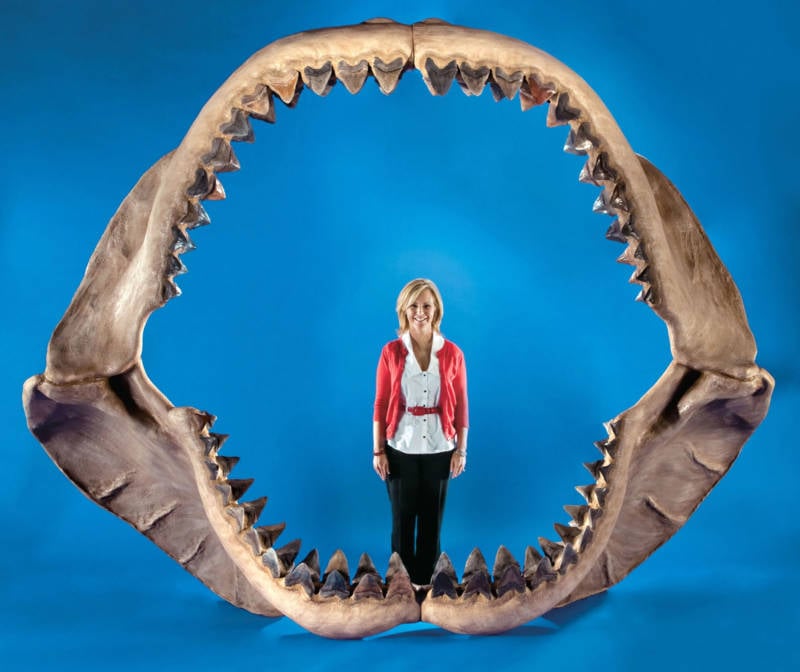
Heritage Auctions/Shutterstock.comWoman standing in the reconstructed jaws of the megalodon.
However, recent studies have suggested that the megalodon’s geographic distribution did not significantly increase during warm periods or decrease significantly during cooler periods, indicating that there must have been other reasons contributing to their eventual extinction.
Some scientists point to a shift in food chain dynamics.
Dana Ehret, a University of Alabama paleontologist, told National Geographic that the megalodon often depended on whales as a food source, so when the whales’ numbers dipped, so did the megalodon’s.
“You see a peak in whale diversity in the mid-Miocene when megalodon shows up in the fossil record and this decline in diversity in the early-middle Pliocene when meg goes extinct,” Ehret explained.
Without the large numbers of fatty whales to feed on, the megalodon’s huge size could have hurt it. “Meg might’ve gotten too big for its own good and the food resources weren’t there anymore,” he added.
Plus, other predators, like great whites, were around and competing for the diminishing whales as well. Smaller numbers of prey plus larger numbers of competing predators meant big trouble for the megalodon.
Could The Megalodon Still Be Alive?
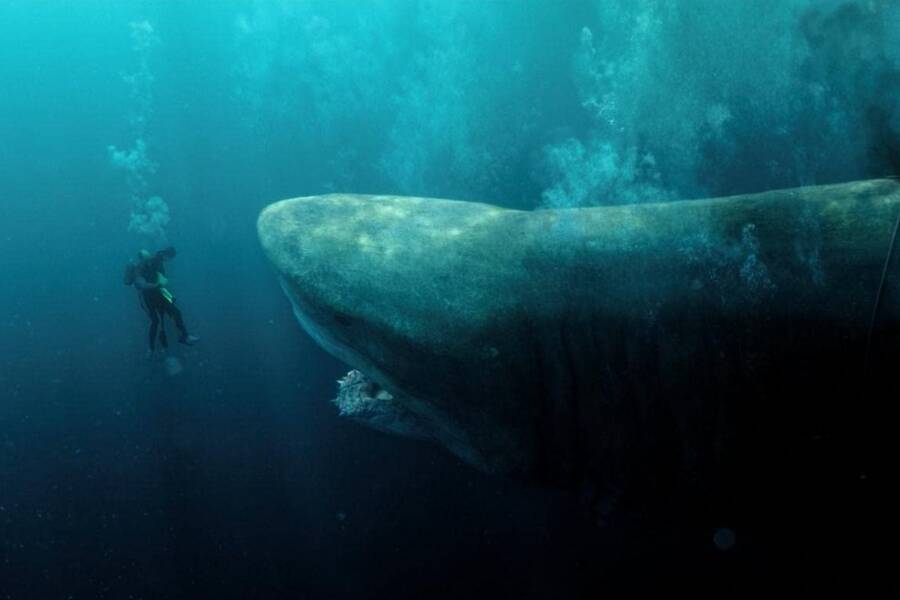
Warner Bros.A scene from the 2018 science fiction action movie The Meg.
While scientists still debate over the main cause for the extinction of the megalodon, they all agree on one thing: the megalodon is gone forever.
Despite what cheesy horror movies and a fabricated Discovery Channel mockumentary might make you think, it is nearly universally believed in the scientific community that the megalodon is indeed extinct.
One common theory for the megalodon still existing, which has been depicted on the big screen in the 2018 science fiction action movie The Meg, is that the giant predator still lurks in the depths of our unexplored oceans. On the surface, this seems like it could be a plausible theory, considering a large percentage of Earth’s waters remain unexplored.
However, most scientists believe that if the megalodon were somehow alive, we would know about it by now. The sharks would leave huge bite marks on other large marine creatures like whales and there would be new, non-fossilized teeth falling from their mouths littering the ocean floors.
As Greg Skomal, a shark researcher and the recreational fisheries program manager at the Massachusetts Division of Marine Fisheries, explained to Smithsonian Magazine: “We’ve spent enough time fishing the world’s oceans to have a sense of what’s there and what’s not.”
Plus, if some version of the megalodon did defy all of the odds and was still alive in the ocean’s depths, it would look like a shadow of its former self. The shark would have had to have undergone some serious changes to adapt to living in such cold and dark waters. And even if megalodons did swim in modern oceans, scientists are divided on whether they’d prey on humans.
“They wouldn’t even think twice about eating us,” Hans Sues, the curator of vertebrate paleobiology at Smithsonian’s National Museum of Natural History, said. “Or they would think we are too small or insignificant, like hors d’oeuvres.” However, Catalina Pimiento, a paleobiologist and megalodon expert at Swansea University, insisted, “We’re not fatty enough.”
How Recent Discoveries Shed Light On Earth’s Mightiest Prehistoric Shark
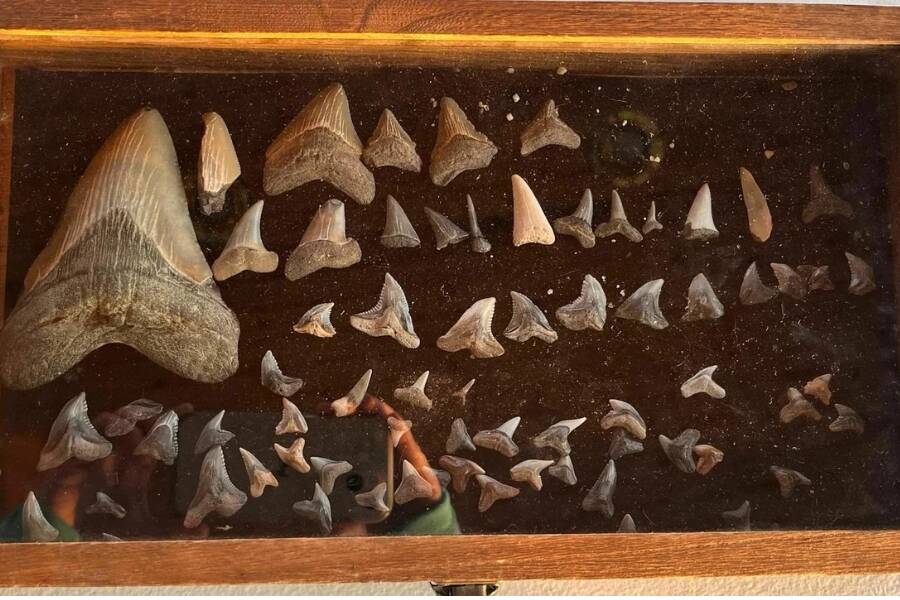
Family PhotoNine-year-old Molly Sampson’s shark tooth collection, featuring her newly discovered megalodon tooth on the left.
Earth’s oceans are teeming with shark teeth — not surprising, given how many teeth sharks lose throughout their lives — but that number isn’t limited to modern-day sharks. Even millions of years after they went extinct, new megalodon teeth are still being discovered each year.
In fact, in December 2022, a nine-year-old Maryland girl named Molly Sampson and her sister Natalie were shark tooth hunting in the Chesapeake Bay near the Calvert Cliffs, testing out their new insulated waders.
As Molly and her family explained, Molly waded out into the water that day with one goal in mind: she wanted to find a “meg” tooth. It had always been a dream of hers. And that day, it came true.
“I went closer, and in my head, I was like, ‘Oh, my, that is the biggest tooth I’ve ever seen!'” Molly recounted her thrilling experience. “I reached in and grabbed it, and dad said I was shrieking.”
When the Sampsons presented their tooth to Stephen Godfrey, the curator of paleontology at the Calvert Marine Museum, he described it as a “once-in-a-lifetime kind of find.” Godfrey also added that it was “one of the larger ones that’s probably ever been found along Calvert Cliffs.”
And while discoveries like Molly’s are exciting for a litany of personal reasons, they also provide scientific value. Each new megalodon-related find provides researchers with more usable information on these mighty, ancient sharks — information that allows them to do things like create a 3D model illustrating that megalodons could eat prey the size of killer whales.
But as fascinating as these ancient beasts were, perhaps we should be thankful that they don’t still lurk in Earth’s waters today.
After reading about the megalodon, the biggest shark to ever live, learn all about the Greenland Shark, the world’s longest-living vertebrate. After that, check out these 28 interesting shark facts.
